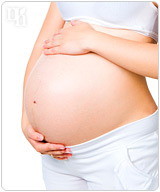Are you considering hormone replacement therapy (HRT) as a treatment for your menopausal symptoms? Many women who have heard about HRT treatments ask themselves, “Do I have to have both estrogen and progesterone in my HRT?” Although it is possible to have just progesterone HRT, it is not recommended. Most doctors believe that you need both estrogen and progesterone because they balance each other out. Without one or the other, your body will not be able to fight your menopausal symptoms. Read on to find out what progesterone is and why it is important during menopause.
What Is Progesterone?

Progesterone, produced in the ovaries, is one of the most important hormones in the female body. During the second two weeks of menstruation, it is secreted in high concentration. During pregnancy, large amounts of progesterone are produced by the placenta itself and it can help prepare the body for pregnancy and sustain the development of the embryo. Progesterone causes the endometrium to secrete special proteins to prepare it for the implantation of a fertilized egg. If fertilization does not occur, progesterone levels drop along with estrogen levels, which triggers menstruation.
In addition to its role in pregnancy, progesterone has many other known effects on the female body. It can affect many of the metabolic processes, help prevent menstrual contractions, and it acts as a muscle relaxant and helps in the development of uterine tissues. With so many functions, it is clear that low levels of progesterone can cause serious problems in a woman's body.
Progesterone and Menopause

The onset of menopause triggers a drop in progesterone levels. When a woman's progesterone levels fall, there are many side effects, some of which have an effect on a woman's mood and physical well-being. The common side effects of low progesterone are severe migraines, symptoms similar to those of premenstrual syndrome (PMS), irregular periods, unexplained anxiety, hot flashes, poor sleep patterns, and vaginal dryness. Each of these symptoms can have an effect on your mood, and high anxiety coupled with poor sleeping patterns often leads to irritability or mood swings.
It is important to understand the natural hormones in your body and how they change during the menopause transition in order to find a suitable treatment. Your doctor can help you decide if you would benefit from progesterone-only HRT or another treatment method. Click on the following link to learn more about low progesterone levels.


